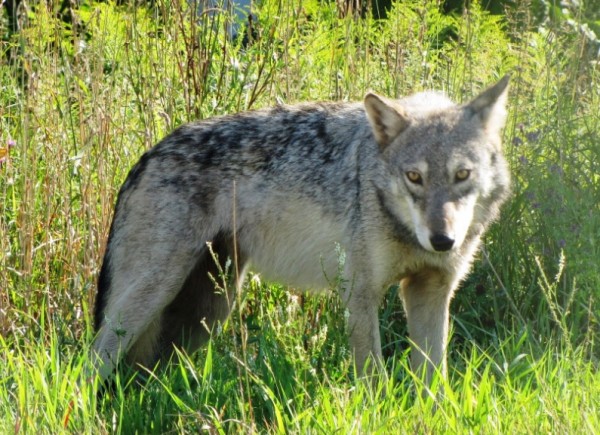Study: Legal Wolf Hunting Can Still Lead to More Poaching
| Ana Verayo | | May 12, 2016 05:33 AM EDT |
(Photo : Wikipedia) Wolves still suffer from slower population growth rates due to legalized hunting.
A new study reveals how legalized hunting of wildlife may not necessarily reduce poaching activities. Many worldwide governments and organizations resort to the legalization of hunting under controlled regulations to fight illegal hunting, however, researchers say that this approach may not be efficient in eradicating of illegal hunting trends.
Like Us on Facebook
According to co-author of the study, Guillaume Chapron of the Grimsö Wildlife Research Station under the Swedish University of Agricultural Sciences, governments have succumbed to killing in an attempt to conserve wildlife, tin order to justify this act. In this new study, there is no scientific support behind this approach and so-called solution.
By analyzing data based on protection policy changes for carnivores in the United States, especially the growth rate of wolves, this helped them create a model revealing that controlled and legalized hunting already significantly affected wolf populations in Michigan and Wisconsin in recent years.
More specifically, researchers observed slower rates in the population growth of these wolves, in a repetitive pattern. Due to legalized hunting, their growth rate only became 12 percent from 16 percent.
Researchers claim that there are no natural factors to consider, where they believe that the most likely driving force for slower population growth rates is due to poaching. They also observed that during the time when there are hunting policy changes, poaching activities even increased.
These new findings also suggest that the legalizing of wolf hunting also depicted a total loss of regard to the iconic status of the creature, of America's rich wildlife. These results also predict that the government may totally remove restrictions on poaching, which could mean a losing end for conservation efforts.
Apart from wolves, Chapron also says that those wildlife affected by legalized hunting are similar carnivores as well, such as the lynx, wolverines and mountain lions.
The most recent example of this threat is the possible delisting from the endangered species list of the American grizzly bear in the Yellowstone region and nearby states, which could lead to controlled hunting even if the iconic bear has not yet fully recovered, with only less than 700 individuals in the U.S.
This new study is published in the Proceedings of the Royal Society B journal.
Tagswolves, wildlife conservation, poaching, legal hunting, endangered species, US, wildlife
©2015 Chinatopix All rights reserved. Do not reproduce without permission
EDITOR'S PICKS
-

Did the Trump administration just announce plans for a trade war with ‘hostile’ China and Russia?
-

US Senate passes Taiwan travel bill slammed by China
-

As Yan Sihong’s family grieves, here are other Chinese students who went missing abroad. Some have never been found
-

Beijing blasts Western critics who ‘smear China’ with the term sharp power
-

China Envoy Seeks to Defuse Tensions With U.S. as a Trade War Brews
-

Singapore's Deputy PM Provides Bitcoin Vote of Confidence Amid China's Blanket Bans
-

China warns investors over risks in overseas virtual currency trading
-

Chinese government most trustworthy: survey
-

Kashima Antlers On Course For Back-To-Back Titles
MOST POPULAR
LATEST NEWS
Zhou Yongkang: China's Former Security Chief Sentenced to Life in Prison

China's former Chief of the Ministry of Public Security, Zhou Yongkang, has been given a life sentence after he was found guilty of abusing his office, bribery and deliberately ... Full Article
TRENDING STORY

China Pork Prices Expected to Stabilize As The Supplies Recover

Elephone P9000 Smartphone is now on Sale on Amazon India

There's a Big Chance Cliffhangers Won't Still Be Resolved When Grey's Anatomy Season 13 Returns

Supreme Court Ruled on Samsung vs Apple Dispute for Patent Infringement

Microsoft Surface Pro 5 Rumors and Release Date: What is the Latest?










